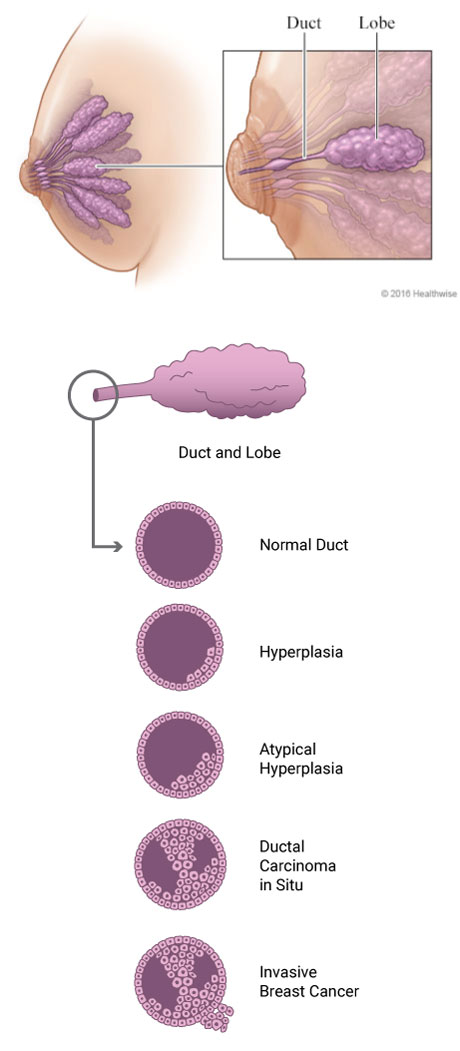Normally there are 1 to 2 layers of cells that line the ducts and lobules of your breast. These cells look the same or similar under a microscope.
In a condition called hyperplasia, too many of these cells begin to grow. Several layers of thickness develop. Sometimes, these cells change and become abnormal. When this happens it’s called an atypical change.
Atypical hyperplasia describes a change in cells that line the ducts or lobules of the breast. Figure 1, below, shows you the cell changes that happen with this condition.
There are 2 kinds of atypical hyperplasia:
- atypical ductal hyperplasia (ADH) is found in the ducts
- atypical lobular hyperplasia (ALH) is found in the lobules
If you have one of these it doesn’t mean that you have cancer. You are however, at higher risk for breast cancer. It can take many years for these conditions to develop into breast cancer.
Many people don’t know they have atypical hyperplasia. It doesn't show up on a regular screening mammogram or breast self-exam. If you do know you have this condition because of a biopsy or other procedure, talk with your healthcare provider about a plan to watch and treat this condition.

